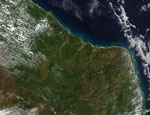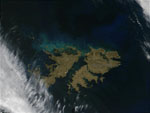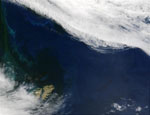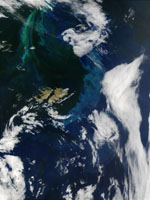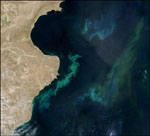 |
The waters off southern Argentina swirling with the blues and greens that indicate massive amounts of phytoplankton. The blues and greens are caused by sunlight reflecting off the chlorophyll contained in the tiny, often single-celled plants. |
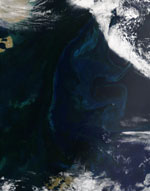 |
A large, colorful phytoplankton bloom off the coast of Argentina. This area of the Atlantic is known for such blooms because of the turbulence created by a cold current flowing north past the Falkland Islands (bottom) from Antarctica and a warmer south-flowing current that hugs the South American coast. The turbulence draws cold, nutrient rich water up from deep in the ocean, and the phytoplankton spring to life. |
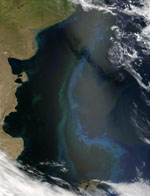 |
This phytoplankton bloom off the coast of Argentina, is nearly 800-miles long. The bloom runs the length of the image-with some of the most spectacular features to the northeast of the Falkland Islands (bottom center).
|
